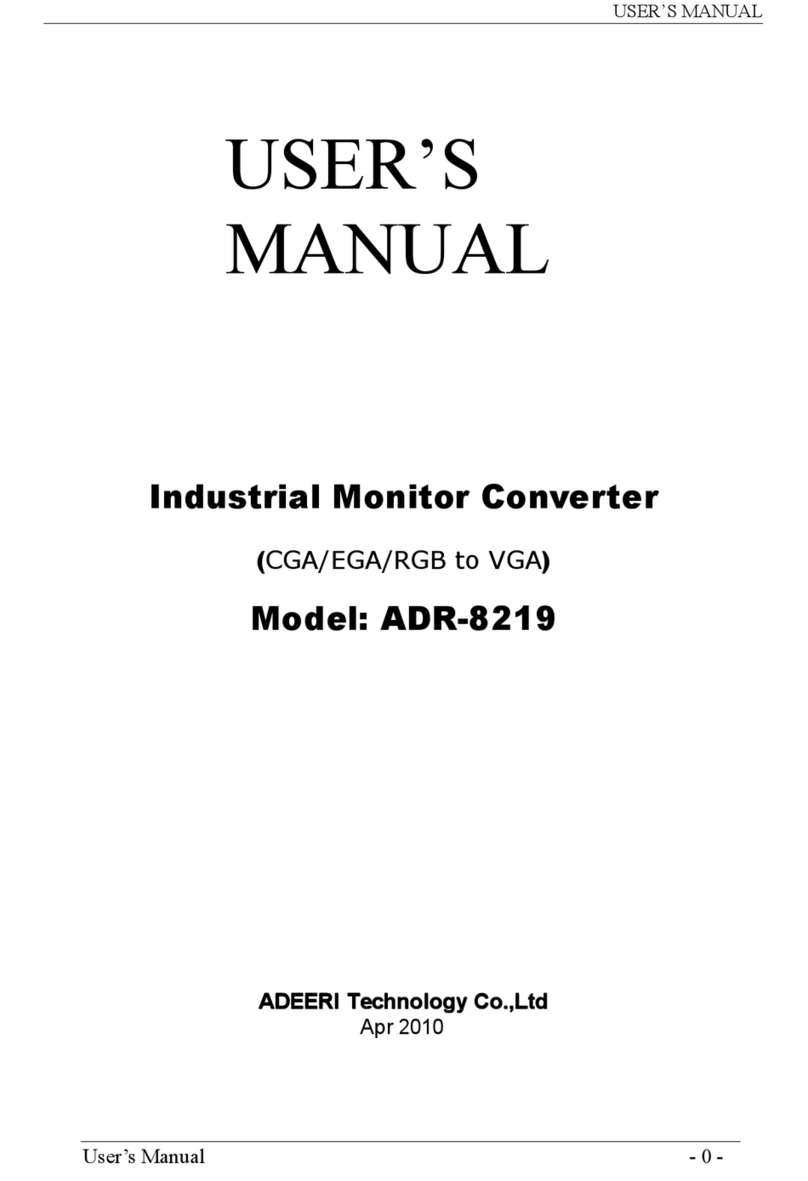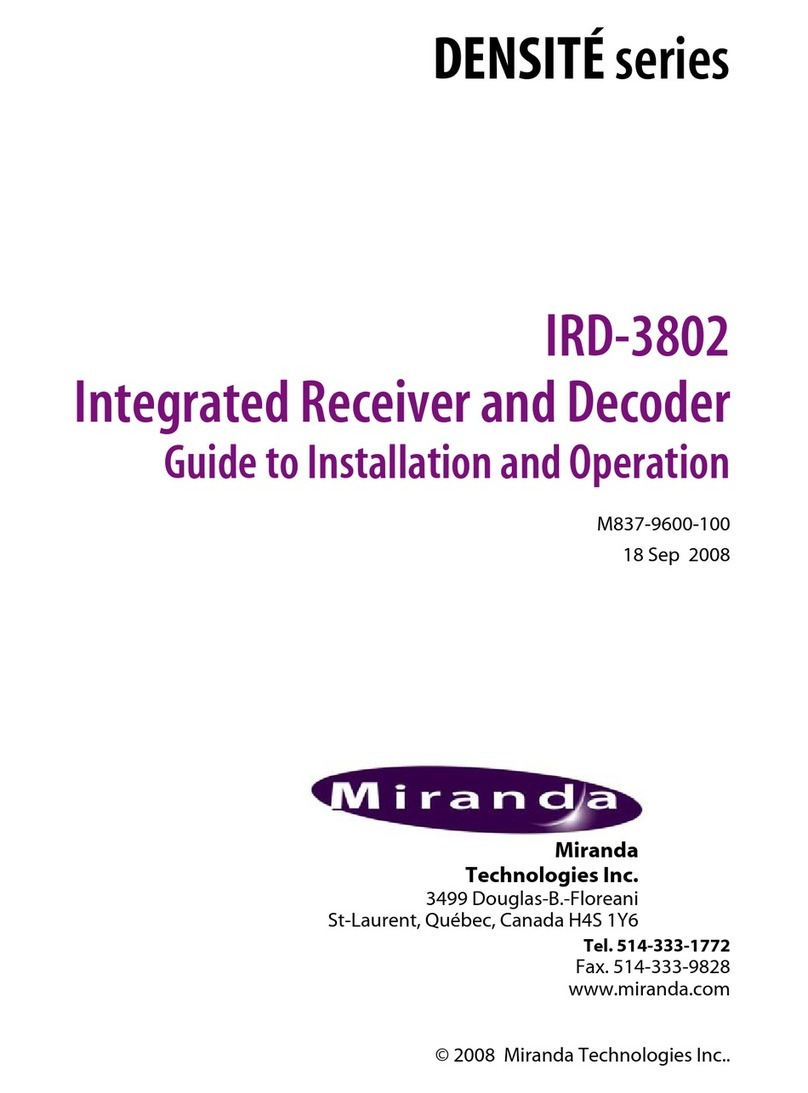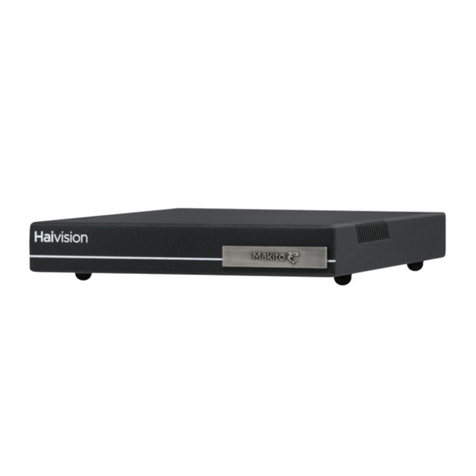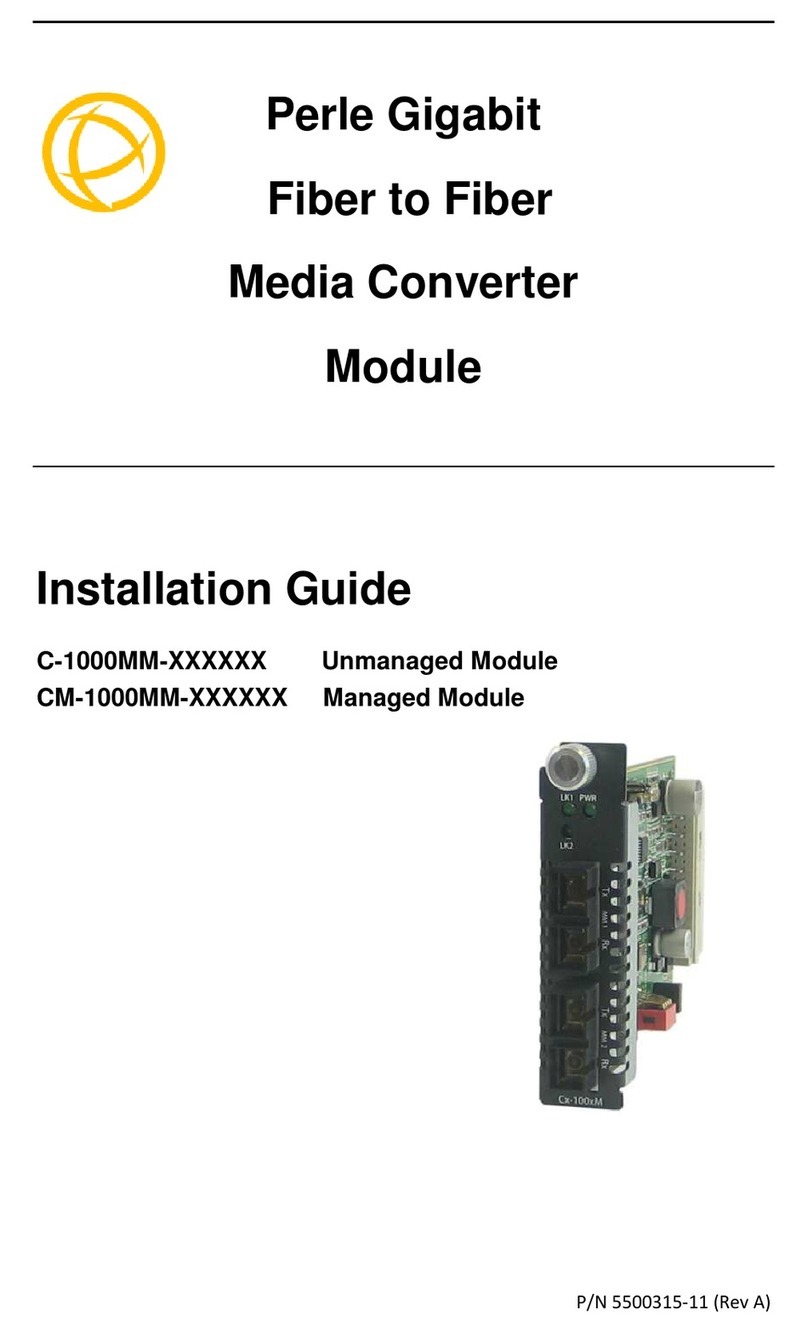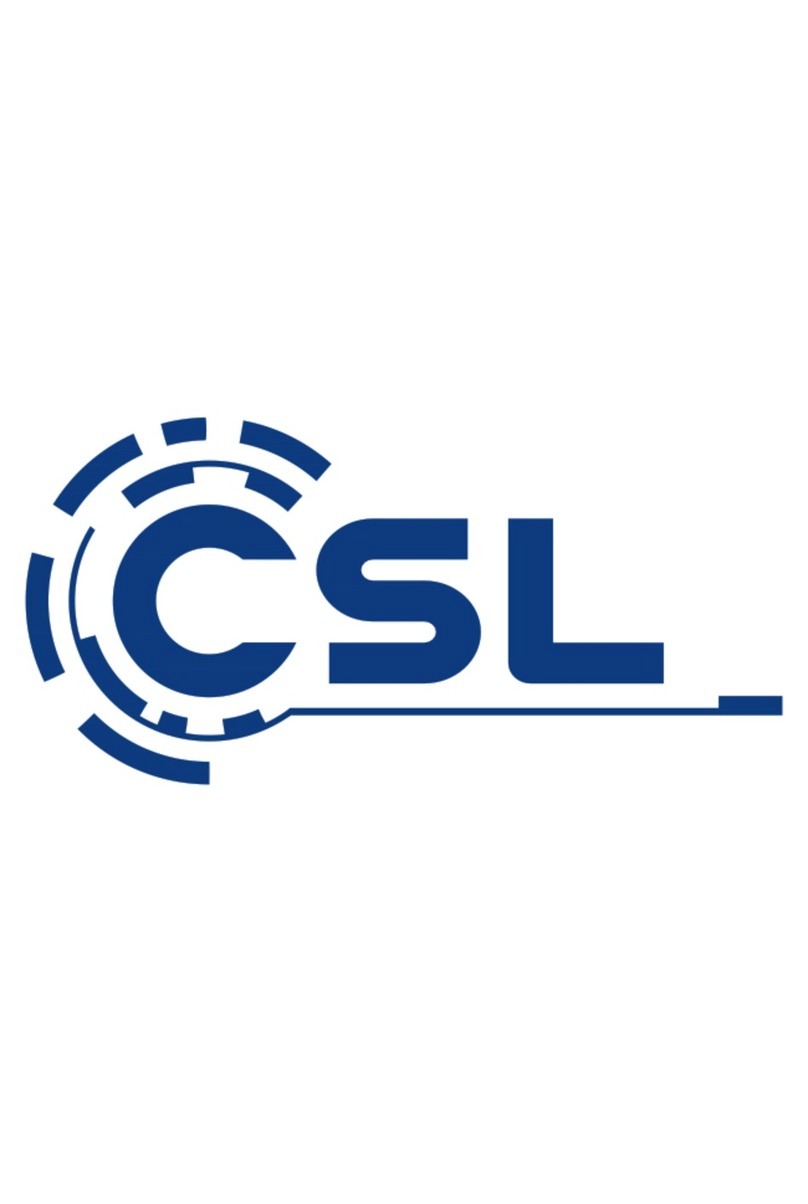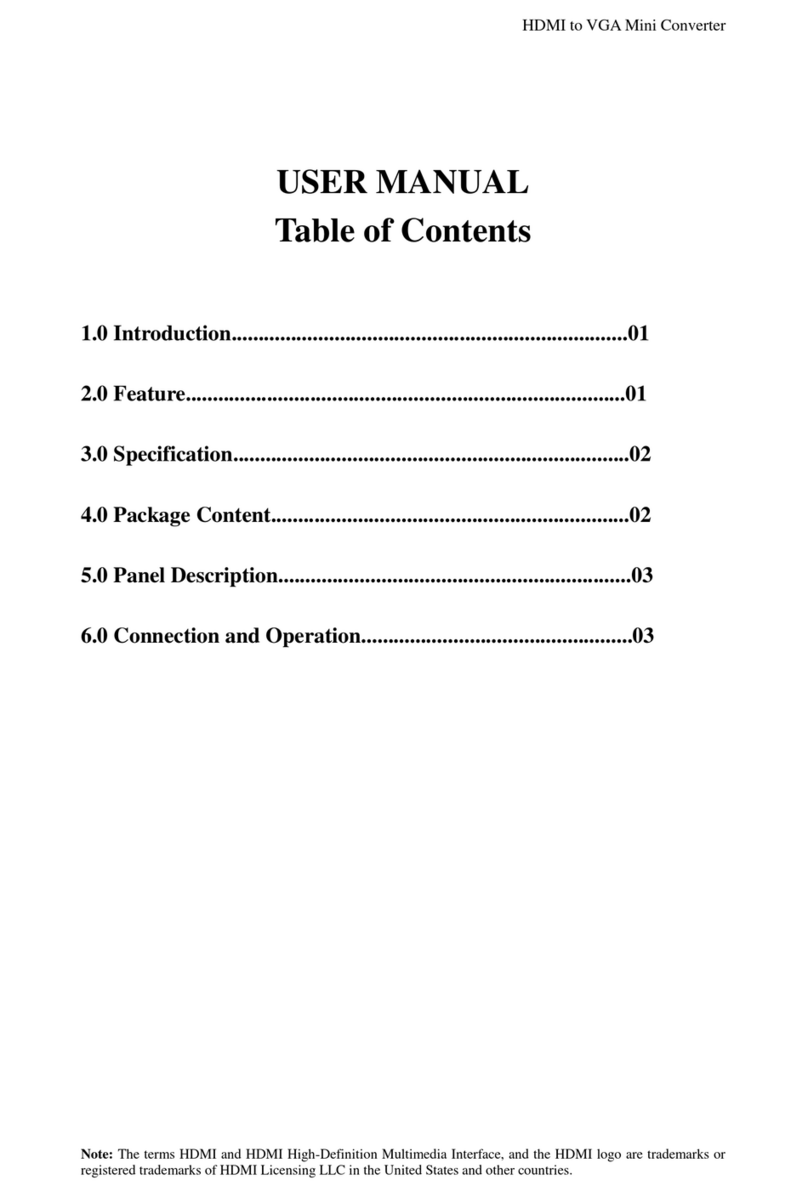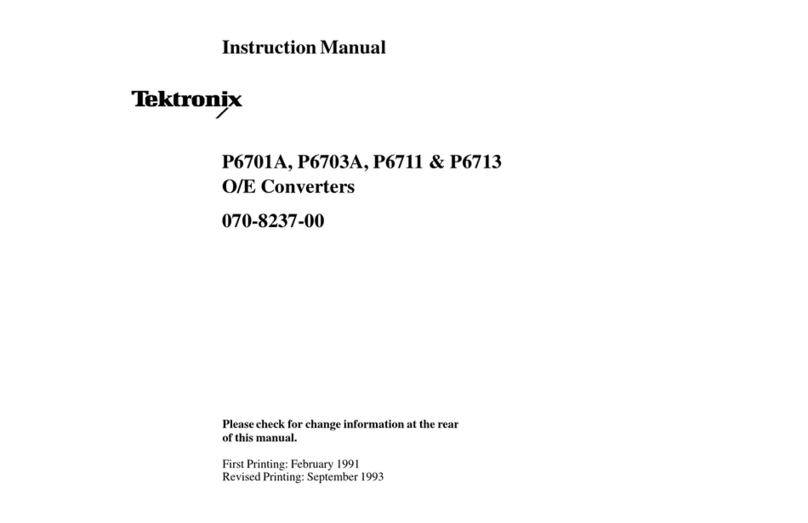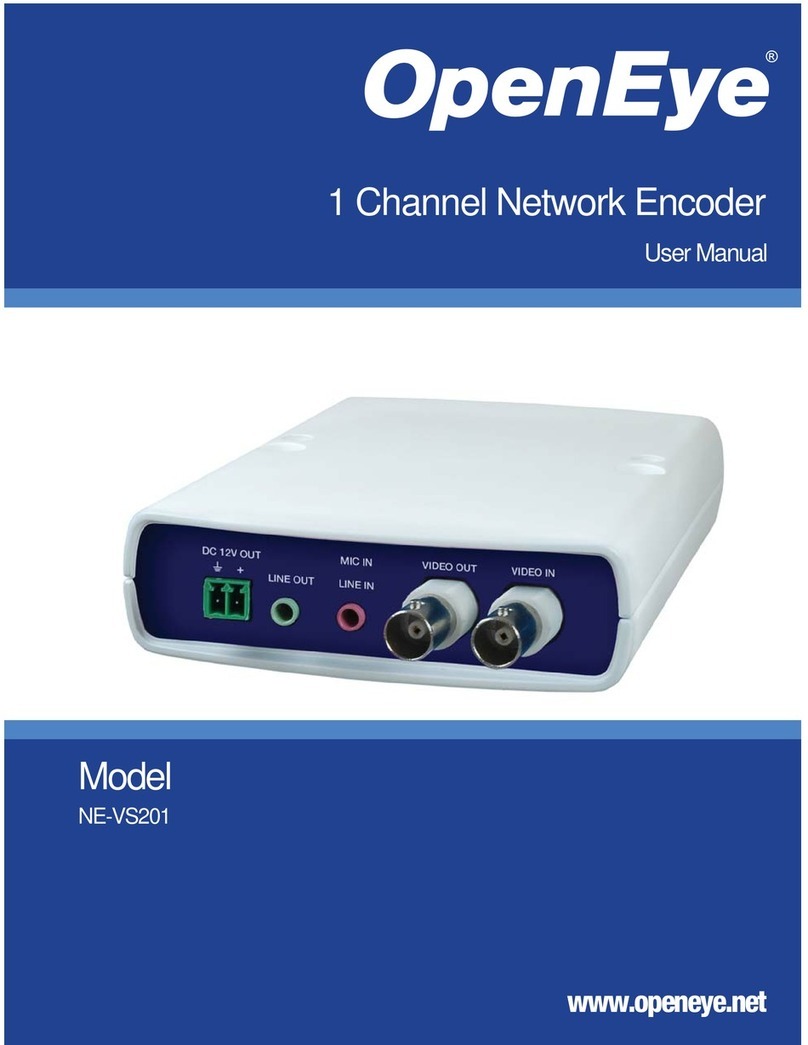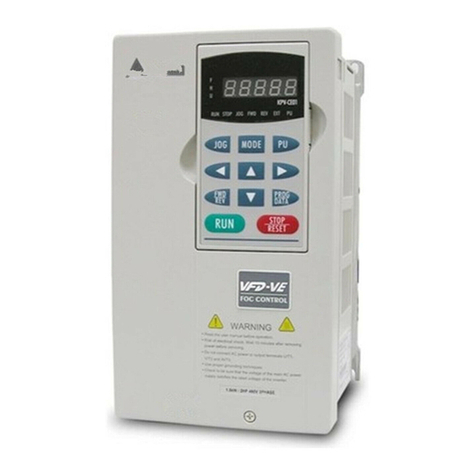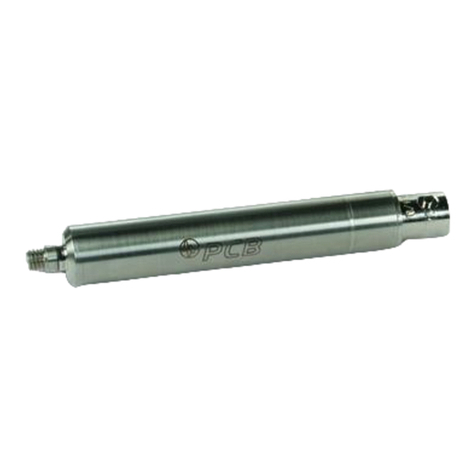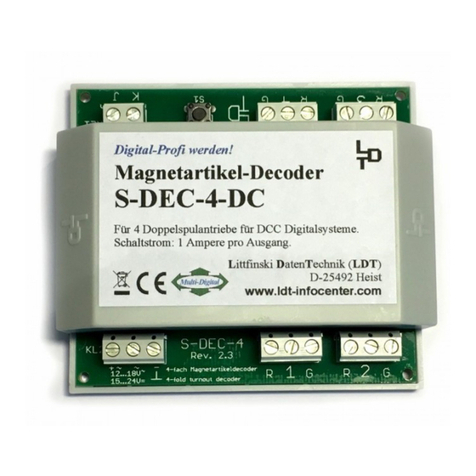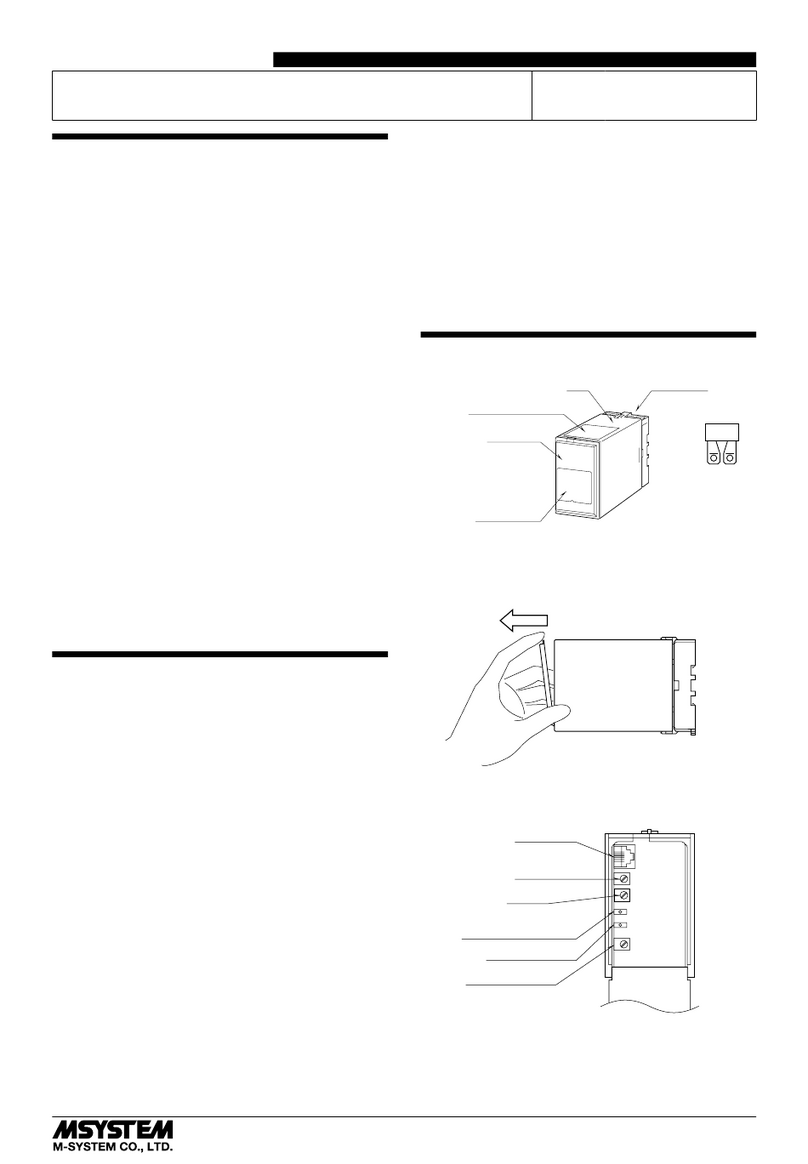BESA M-BUS-1 User manual

www.vega-absolute.ru
LORAWAN CONVERTER
M-BUS-1
User Manual
M-BUS-1 converter is used for reading of values from metering
instruments via M-BUS interface and further transmitting of this
data to the LoRaWAN network.
M-BUS-1 has also two security inputs and two ‘open drain’
outputs.

M-BUS-1 / User Manual
2
Revision 09 - 24 January 2019
Document Information
Title
M-BUS-1 LoRaWAN device
Document type
Manual - Translation from Russian
Document number
V02-MBUS1-01
Revision and date
09 –24 January 2019
This document applies to the following products:
Product name
Type number
End devices
M-BUS-1
Revision History
Revision
Date
Name
Comments
01
29.08.2017
KEV
Document creation date
02
05.10.2017
TII
Minor changes
03
26.10.2017
KEV
External devices connection was added
04
30.10.2017
TII
Work in transparent mode, exchange protocol edits, part
“Contacts” is expanded
05
05.04.2018
TII
Supported connected devices list, the number of
warranty packages has changed, minor changes
06
10.08.2018
KEV
Changes in the device logic, frequency plans are added,
changes in the communication protocol, in technical
characteristics, new supported meters are added
07
02.11.2018
KEV
Typo about battery capacity in the specification is fixed,
new supported heat meter is added
08
22.01.2019
KEV
Changes in the communication protocol, in
specification, settings by the air described, added
“Marking” part and “Indication” part
09
24.01.2019
KEV
Inaccuracy in communication protocol fixed –packet
type for packets with settings and request of settings

M-BUS-1 / User Manual
3
Revision 09 - 24 January 2019
CONTENTS
INTRODUCTION.........................................................................................................................................................................4
1 DESCRIPTION AND OPERATION .........................................................................................................................................5
Device description .................................................................................................................................................................5
Comunication and data collection algorithm ..................................................................................................................6
Functional ................................................................................................................................................................................6
Marking.....................................................................................................................................................................................7
2 SPECIFICATION .......................................................................................................................................................................8
3 OPERATION..............................................................................................................................................................................9
Contacts ...................................................................................................................................................................................9
Indication ...............................................................................................................................................................................11
Initial startup..........................................................................................................................................................................12
External devices connection..............................................................................................................................................13
Converter operation in the independent poll mode of the metering devices ........................................................13
Converter operation in the transparent mode ...............................................................................................................14
Connecting via USB .............................................................................................................................................................14
4 VEGA LORAWAN CONFIGURATOR...................................................................................................................................16
Interface of the application ................................................................................................................................................16
Connection to the device...................................................................................................................................................17
“Device info” tab ...................................................................................................................................................................18
“LoRaWAN settings” tab ......................................................................................................................................................20
«Vega MBUS-1» TAB ............................................................................................................................................................25
5 COMMUNICATION PROTOCOL ........................................................................................................................................27
Converter M-BUS-1 transmits the following types of packets....................................................................................27
Converter M-BUS-1 receives packets of the following types .....................................................................................30
6 STORAGE AND TRANSPORTATION REQUIREMENTS ...................................................................................................33
7 CONTENT OF THE PACKAGE .............................................................................................................................................34
8 WARRANTY.............................................................................................................................................................................35

M-BUS-1 / User Manual
4
Revision 09 - 24 January 2019
INTRODUCTION
This manual is designated for M-BUS-1 device (hereinafter –device, converter)
manufactured by Vega-Absolute LLC and provides information on powering and activation
procedure, control commands and functions of the device.
This manual is targeted at specialists familiar with installation work fundamentals for
electronic and electrical equipment.
The device shall be installed and adjusted by qualified specialists in
order to ensure proper operation of the device

M-BUS-1 / User Manual
5
Revision 09 - 24 January 2019
1 DESCRIPTION AND OPERATION
DEVICE DESCRIPTION
The device M-BUS-1 is designed for reading of values from metering instruments via
M-BUS interface and further accumulating and transmitting of this data to the LoRaWAN
network. M-BUS-1 has two ‘open-drain’ outputs so it can be used as a control device. Also
device has two security inputs.
Converter M-BUS-1 may operate in two modes. Converter can be used for any utilities’
meters and industrial equipment with M-BUS interface while it operates in the transparent
mode. But in the independent poll mode of the metering devices converter can be used only
with the next supported devices:
Heat meter «Teplouchet-1»
Heat meter «STE 21 «Berill»
Heat meter «Danfoss Sonometer 500»
Heat meter «ELF-M Teplovodomer»
Heat meter «WESER Heat Meter»
Heat meter «Kamstrup Multical 801»
Heat meter «Kamstrup Multical 402»
The converter is powered by a 6400 mAh built-in battery with service life up to 10
years, provided data transmitted once a day. The converter can be powered by the 10…36 V
external power supply.
Quantity of connecting M-BUS devices to the converter is up to 10 at the same time.
For the correct functioning of the converter in the independent poll mode,
it is recommended to connect one-model counting devices to one converter
If you simultaneously use different models of metering devices with a single
converter, you should only use the transparent mode of polling devices

M-BUS-1 / User Manual
6
Revision 09 - 24 January 2019
COMUNICATION AND DATA COLLECTION ALGORITHM
The readings collecting from the meter with a configurable period from 5 minutes to
24 hours. The readings stored in the device memory and transmitting during the next
communication session with the LoRaWAN network.
The adjustable data transfer period can be from 1 to 24 hours. Data transferring in
random point in time during set period. At the next communication session, the device starts
sending accumulated packets with readings, from the earliest to the latest.
With the "Confirmed uplinks" option turned on, the device will send the next packet
only after receiving a confirmation of the delivery of the previous one. If such confirmation
have not received after the fulfilled in the settings uplink number of transmission, device
completes the communication session until the next one according to the schedule. In this
case, the device continues to collect data according to the data collection period and store it
in memory. Non-transmitted packets remain in the device memory until the next
communication session.
With the "Confirmed uplinks" option turned off, the device just sends all accumulated
packets to the network in order from the earliest to the latest. There are no checks of package
delivery in this mode. There are no non-transmitted messages in the device memory.
The internal clock is set automatically when device connected to the "Vega LoRaWAN
Configurator" via USB, also adjustable via LoRaWAN.
FUNCTIONAL
M-BUS-1 converter can either be of class A or class C (LoRaWAN classification) and has
the following features:
oAutomatic change from A class to C class when powered from an external power
supply
oADR support (Adaptive Data Rate)
oSending of confirmed packets (configurable)
oExtra communication in case of security inputs actuation
oTemperature measurement by the internal temperature sensor
oCharge measuring of the built-in battery (%)

M-BUS-1 / User Manual
7
Revision 09 - 24 January 2019
MARKING
Device marked with sticker that contain the next information:
oDevice model;
oDevEUI;
oMonth and year of manufacture;
oQR-code containing DevEUI for automatized count.
Sticker located in three places –on device case, in factory certificate and on the packing
box.
Besides, there is an additional sticker located on the packing box and contains:
oInformation about firmware version;
oQR-code containing DevEUI and keys for device registration in network via OTAA
method.

M-BUS-1 / User Manual
8
Revision 09 - 24 January 2019
2 SPECIFICATION
Main
M-BUS interface
1
Quantity of connecting M-BUS devices
up to 10
Security inputs
2
‘Open-drain’ outputs
2
USB-port
mini-USB, type B
Operating temperatures
-40…+85 °С
LoRaWAN
AppEui by default
4D2D425553203120
LoRaWAN class
A or С
Quantity of LoRa channels
16
Frequency plan
RU868, EU868, IN865, AS923, AU915,
KR920, US915, KZ865, custom (EU868
based)
Activation type
ABP or OTAA
Communication period
1, 6, 12 or 24 hours
Data collection period
5, 15, 30 minutes, 1, 6, 12 or 24 hours
Memory amount for storing packets
50 packets
Antenna connector
SMA
Sensitivity
-138 dBm
Radio coverage in restrained urban conditions
max 5 km
Radio coverage within line of sight
max 15 km
Transmitter power by default
25 mW (configurable)
Maximum transmitter power
100 mW
Power
Built-in battery
6400 mAh
External power supply
10…36 V
Warranty number of packets sent by the device,
not less
20 000
Case
Housing dimensions
95 х 80 х 65 mm
Ingress protection rating
IP65
Mounting
clamp fastening to the support, DIN-
rail, wall-mounting

M-BUS-1 / User Manual
9
Revision 09 - 24 January 2019
3 OPERATION
CONTACTS
Converter has 10 contacts, see table below:
Contact
Designation on the board
Description
1
OUT_2
Open-drain output 2
2
OUT_1
Open-drain output 1
3
+VPWR
Power +
4
Power -
5
MBAS-
M-BUS -
6
MBAS+
M-BUS +
7
COUNT_2
Security input 2
8
Ground
9
COUNT_1
Security input 1
10
Ground
Ground contacts 8 and 10 are used for connection of security inputs COUNT_1 and
COUNT_2.
Security inputs of the M-BUS-1 device are used to connect circuits with the following
types of NO contacts:
- reed switch (Herkon);
- mechanical pushbutton;
- open-drain output.

M-BUS-1 / User Manual
10
Revision 09 - 24 January 2019
While security input connected the device monitors its closure/unlocking. Should the
security input triggering, the device is activated and sends an alarm message to the network.
For connect an external metering instrument contacts M-BUS+ иM-BUS- are used.
The outputs OUT_1 and OUT_2 operate on the principle of open-drain and can be used
to control external devices, such as electric cranes, lighting, sirens and so on. The load capacity
of each output is no more than 200 mA.
In order to increase the battery life, the physical level of the M-BUS interface is switch on
(supply voltage is applied to the outputs MBAS +, MBAS-) just before meter polling with a
programmable delay (the delay value is depends on the type of connected meter). The delay is
introduced for initializing own meter interface and its preparing for receiving data from the
converter. When the polling is complete, the physical M-BUS level is turned off.
When the converter is in class C, the physical level of the M-BUS interface is constantly
on and does not turn off after completing a poll.

M-BUS-1 / User Manual
11
Revision 09 - 24 January 2019
INDICATION
There is a one red LED on the board. The indication is only used when the device is
activated in the LoRaWAN network and when the operating modes are changed.
LED signal
Meaning
Series of short flashings
Linking to the network
One long flashing
The device connected to the network
and is in active mode
Three long flashings
Linking to the network is unsuccessful
or the device switched to the «Storage»
mode
In case of connection attempt fail, the device will continue to
accumulate data and will attempt to connect to the network every 6
hours
LED on the board

M-BUS-1 / User Manual
12
Revision 09 - 24 January 2019
INITIAL STARTUP
The M-BUS-1 converter can be powered from either an external power source or built-
in battery. To operate from the built-in battery, you must connect the battery connector to the
power connector on the board.
The converter supports two activation methods in the LoRaWAN network - ABP and
OTAA. Select one of the methods using “Vega LoRaWAN Configurator” application (See part 4).
1. ABP. After pressing the start button, the device immediately starts working in the
"Active" mode.
2. OTAA. After pressing the start button, the device makes three attempts to connect to
the network within the set frequency plan. After the activation in the LoRaWAN network is
confirmed, the device sends a signal (LED flashing for 5 seconds) and switches to the "Active"
mode. If all attempts fail, the converter will continue to accumulate data and will attempt to
connect to the network every 6 hours.
Battery connector
Press the start
button located on
the board

M-BUS-1 / User Manual
13
Revision 09 - 24 January 2019
To transfer the device from the "Active" mode to the "Storage" mode, you can use the
long press of the start button (more than 5 seconds).
Before connecting the device to the network, make sure that its registration
data is entered in the network - Device EUI, Application EUI and Application
Key for OTAA, or Device address, Application session key and Network
session key for ABP
EXTERNAL DEVICES CONNECTION
The actuators are connected to the converter via outputs OUT_1 and OUT_2, which are
of the type "Open-drain".
Permissible load for each digital output is 200 mА
To increase the load on the device outputs, it is necessary to use an external relay. The
relay connection scheme is shown below.
CONVERTER OPERATION IN THE INDEPENDENT POLL MODE OF THE METERING
DEVICES
In the independent poll mode, the converter periodically and consistently polls the
metering devices at their secondary addresses. The addresses of the polling devices are writting
to the converter using the "Vega LoRaWAN Configurator" application. In case of a successful
poll, the data transferred by the metering device is accumulated in the configurator memory
and sent to the LoRaWAN network in accordance with communication period. The
communication period can be set to 1, 6, 12 or 24 hours in the "Vega LoRaWAN Configurator"
application while converter connected to a computer.

M-BUS-1 / User Manual
14
Revision 09 - 24 January 2019
CONVERTER OPERATION IN THE TRANSPARENT MODE
For enable using converter in conjunction with various software systems dispatching of
meters and industrial equipment, there is added ability to work in a transparent mode. In this
mode, the converter operates as a simple communication channel between the LoRaWAN
network and connected external device. M-BUS-1 can receive data from the LoRaWAN network
for external devices and transfer them to the M-BUS interface without any processing. If the
external device responds to the request, the converter sends the received data back to the
network, also without processing, as one or more packets.
Thus, in transparent mode, the converter does not form a request and does not process
the response from the metering device. The duty to form requests and analyze the responses
lies entirely on the external application that works with M-BUS-1 through the LoRaWAN
network.
The converter must be powered by the external power supply while operating in the
transparent mode (operate as a class C LoRaWAN device).
CONNECTING VIA USB
The device M-BUS-1 adjusted with the "Vega LoRaWAN Configurator" application (See
part 4).
Before connecting the device to the computer for the first time, you must install the
driver for the COM port stsw-stm32102, which can be downloaded from iotvega.com. After
running the executable file VCP_V1.4.0_Setup.exe, the installer window will appear:

M-BUS-1 / User Manual
15
Revision 09 - 24 January 2019
In this window, you need to click Next, then Install, and then the installation will begin.
When the installation is completed successfully, the following screen appears:
After pressing Finish the driver is ready for operation, - it is possible to connect the
converter via USB.

M-BUS-1 / User Manual
16
Revision 09 - 24 January 2019
4 VEGA LORAWAN CONFIGURATOR
The "Vega LoRaWAN Configurator" application (hereinafter referred to as the
configurator) is intended for setting up the device via USB.
The configurator has two modes of operation - "Simple" and "Expert". In the "Simple"
mode, only basic settings are available. In the "Expert" mode, the basic settings, advanced
settings and the ability to check the coverage area of the signal from the gateways are available.
Next, the work of the application is considered in the “Expert”mode.
INTERFACE OF THE APPLICATION
The "Vega LoRaWAN Configurator" application does not require the special installation.
When the executable file is launched, the window for working with the application appears.
The menu on the left allows you to switch between the “Simple”and “Expert”modes,
select the device model, connect to the device or disconnect from it, get and apply settings.
The application window contains three tabs –Device info, LoRaWAN settings and device
settings.
The language selection menu is in the upper right corner.

M-BUS-1 / User Manual
17
Revision 09 - 24 January 2019
CONNECTION TO THE DEVICE
For the connection to the device, perform the following steps:
1. Connect the USB cable to the device.
2. Start the "Vega LoRaWAN Configurator" application.
3. Click the "Connect" button in the menu on the left.
The application automatically recognizes the device model, and the device selection
menu becomes inactive.
To read the settings from the device, you need to click the "Get settings" button, until
this point the application will display the default settings or from the last connected device.
After making the necessary changes to the settings, you should click the "Apply settings"
button and only then disconnect from the device with the "Disconnect" button.

M-BUS-1 / User Manual
18
Revision 09 - 24 January 2019
“DEVICE INFO” TAB
The "Device info" tab displays information about the device, its current status, and also
the data needed to register the device in the LoRaWAN network.
ABP info - displays the data necessary to register the device in the LoRaWAN network
with ABP method (Activation By Personalization).
OTAA info - the data required to register the device in the LoRaWAN network with OTAA
method (Over The Air Activation) is displayed.
Key management (not displayed in the "Simple" mode) - allows you to change the factory
keys to register the device on the network, and also reset the keys back to the factory settings.
Device info - the configurator reads information about the device model, its firmware
and automatically corrects the device's time when connected to it.
Update firmware - allows you to select the firmware file from your computer's hard drive
and load it into the device. The device will automatically disconnect from the configurator
when the download is complete. The current version of the device firmware can be
downloaded from iotvega.com.
Network info - shows whether the device is connected to the LoRaWAN network and its
network address.
Join network button - launch the LoRaWAN network connection procedure with the
previously selected ABP or OTAA method. If the device is already connected to the network,
reconnection procedure will occurs.

M-BUS-1 / User Manual
19
Revision 09 - 24 January 2019
Link check (not displayed in the "Simple" mode) - when pressed, the device sends a
special signal to the LoRaWAN network, in response to which the network informs it of the
number of gateways that received this signal and the signal quality. This button only works
when the device is connected to the network.
Device output (not displayed in the "Simple" mode) - monitoring the device status, all
events in real time are displayed.

M-BUS-1 / User Manual
20
Revision 09 - 24 January 2019
“LORAWAN SETTINGS” TAB
The "LoRaWAN Settings" tab allows you to configure various parameters of the LoRa
network.
Region - allows you to select one of installed frequency plans or specify a custom
frequency plan. Custom frequency plan is EU-868 based.
The converter supports the following frequency plans:
Frequency plan1
Channel
Frequency
Modulation
EU-868
1
868.1
MultiSF 125 kHz
2
868.3
MultiSF 125 kHz
3
868.5
MultiSF 125 kHz
RX2
869.525
SF12 125 kHz
RU-868
1
868.9
MultiSF 125 kHz
2
869.1
MultiSF 125 kHz
RX2
869.1
MultiSF 125 kHz
Custom
Set with «Vega LoRaWAN Configurator»application
In the EU_868 and RU_868 frequency plans, only those channels are active by default,
on which sending requests for connection to the network (join channels). The remaining
channels (that the device should use) can be transferring by the LoRaWAN network server
during the device activation procedure (only OTAA).
1
By default, the device supports two frequency plans and the custom, but it is possible to order firmware for
other frequency plans: IN865, AS923, AU915, KR920, US915, KZ865
Table of contents
